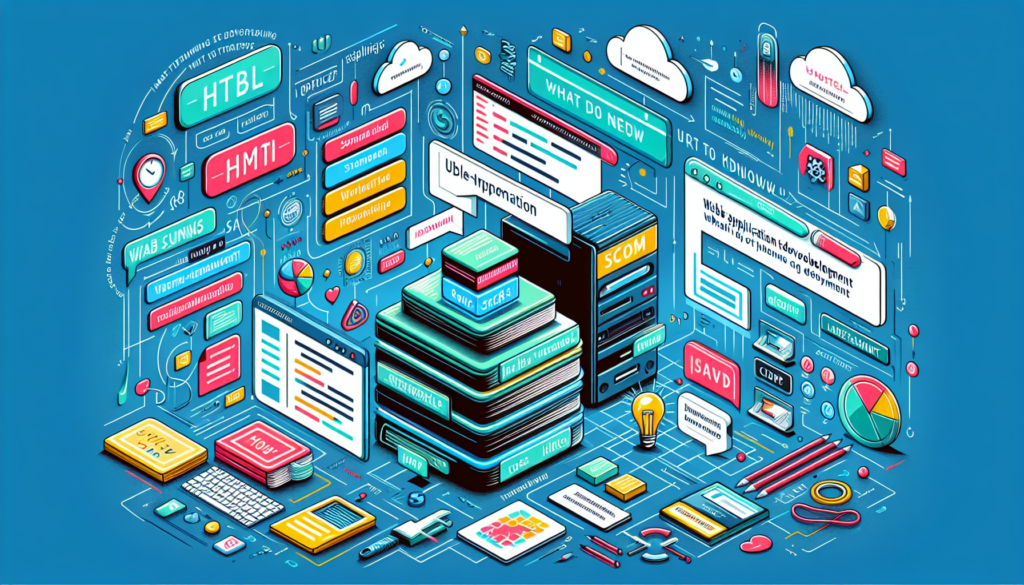In the universe of information technology, web application development embodies a dynamic and essential field, forged by the confluence of various disciplines and technologies. From systems architecture to interface design, through security protocols and performance optimization strategies, the creation of web applications stands as a complex artifact, both engineering and artistic, which demands not only technical knowledge but also a panoramic vision that encompasses the current and future needs of the digital market.
Development Platforms and Frameworks
Angular, React, and Vue.js dominate the client-side framework landscape, each with its distinctive approach to building interactive interfaces. Angular excels for its prescriptive nature and a robust set of features offering the possibility to tackle sophisticated projects with a clear architecture. React, with its component paradigm and backing by Facebook, has revolutionized the way interfaces are thought of, emphasizing reactivity and efficiency, while Vue.js has won fans thanks to its simplicity and friendly learning curve.
On the server side, Node.js provides an environment based on Google’s V8 engine, enabling the execution of JavaScript on the server, a facet that unifies programming languages on both parts of the application and eases the developer’s job. Frameworks like Express and Koa have extended the capabilities of Node.js, allowing for the development of applications more quickly and efficiently.
Database and Storage
Modern web applications generally require a backend that handles data persistence. Both SQL databases and NoSQL are used. PostgreSQL and MySQL stand out among the former for their robustness and compliance with ACID standards, whereas MongoDB and Cassandra are popular NoSQL choices, appreciated for their scalability and flexibility.
Cloud storage also plays a crucial role, with services like Amazon S3 offering solutions for storing large volumes of unstructured data, and Google’s Firestore for real-time storage and data synchronization between client and server.
Cybersecurity
Security aspects cannot be ignored, as vulnerabilities such as SQL injection, XSS, and CSRF represent constant threats. Data encryption strategies in transit (like TLS) and at rest, authentication (OAuth 2.0, OpenID Connect), and authorization (role-based access control) become indispensable. DevSecOps techniques integrate security into the software development lifecycle, bringing security practices up to the same speed as development and operation.
API Management and Microservices
The architecture of microservices and the management of APIs (application programming interfaces) constitute the backbone for interoperability and modularity in complex applications. Tools like Docker and Kubernetes are fundamental for container orchestration and large-scale microservice management. API gateways, such as Kong or Apigee, provide an abstraction layer that facilitates the monitoring, security, and version handling of APIs.
Testing and Continuous Deployment
Quality control and automated testing are vital to ensure reliability and optimal performance. Frameworks like Jest for JavaScript, and tools like Selenium for user interface testing, make up part of the standard developer’s arsenal for this task.
Continuous deployment and continuous integration (CI/CD) are critical practices for agile and secure updates. Platforms like Jenkins, Travis CI, and GitHub Actions automate the software lifecycle, allowing for the implementation of fixes and new features quickly and with fewer errors.
User and Experience
Finally, yet equally crucial, is the user-experience (UX) interaction. Front-end technologies must be in harmony with UX design principles to create applications that are not only functional but also enjoyable to use. Design tools like Sketch or Figma, along with usability testing protocols, allow teams to iterate and continuously improve the user interface.
In summary, the creation of contemporary web applications is built upon the pillars of various technological paradigms, each in constant evolution. Today’s developers must be digital polymaths, with a solid understanding of multiple layers of development and a panoramic vision that allows them to anticipate and shape the future of the digital space. A horizon of unprecedented innovation unfolds before them, enriched by the study and rigorous application of the latest advances in web technology.
These dimensions and their study of specific cases provide a broad yet detailed panorama of what web application creation entails today, harboring at its core the constant challenge of projecting innovations and continuous improvements for the technological infrastructure of our digital era.

